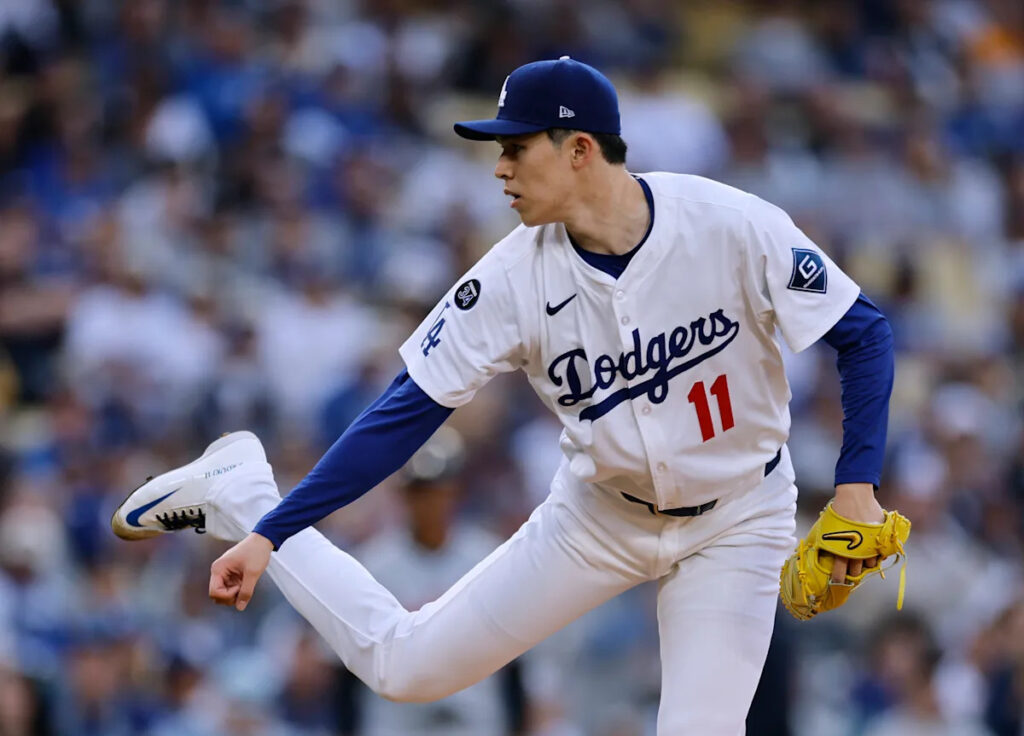(This article was written with the assistance of Castmagic, an AI tool, and reviewed by our editorial team to ensure accuracy. Please reach out to us if you notice any mistakes.)
On the latest episode of “Baseball Bar-B-Cast,” hosts Jordan Shusterman and Jake Mintz delved into the recent struggles of Roki Sasaki, the talented pitcher for the Los Angeles Dodgers.
On Saturday against the Detroit Tigers, Sasaki had a tough outing in which he managed to secure only five outs before he was pulled from the game. The hosts noted his visible frustration and possible tears in the dugout.
“[Sasaki] was awful. Worse than he looked in Japan,” Mintz said. “The fastball command was abysmal. He was missing arm-side with the heater, particularly to lefties. Just couldn’t figure it out. And he was clearly frazzled throughout the entire outing.”
For Mintz, it boils down to one thing: “He’s not ready for this right now.”
The podcast discussion revolved around the Dodgers’ strategy in developing Sasaki, given the high expectations for him after his move from Japan. Mintz and Shusterman debated the pros and cons of keeping him in the major leagues versus sending him to Triple-A to work on his command in a less pressurized environment.
As Mintz put it, “The Dodgers can afford for Roki to figure this out at the big-league level. That is part of what they pitched to him. They’re so talented, so deep that he can go out there and throw up stinkers and work on stuff and effectively use a big-league game as a minor-league development experience. And they can still win.
“But is that what’s best for his development right now? I’m not sure.”
While the Dodgers’ deep and talented roster affords them the flexibility to let Sasaki to develop at the highest level, there’s a valid argument to give him an opportunity to refine his skills and build confidence in Oklahoma City, away from the bright lights of L.A., which could, in turn, be more beneficial for his long-term development.
What’s more, as Shusterman pointed out, the Dodgers have so many other options that their rotation is not reliant on Sasaki at this point in time.
“They did not need to fast-track Roki in this way,” he said. “They didn’t. Not only because they can obviously win without him, but literally they have so many other pitchers that are more than good enough to fill in his spot.”
While Mintz made the argument that the only way Sasaki is going to learn to pitch in the big leagues is to continue pitching in the big leagues, Shusterman disagreed.
“I don’t know if just continuing to roll that out in the big leagues is actively helping,” he said. “And I think that there is a version where five starts in Oklahoma City, in front of fewer people, against worse hitters, where he can actually work on things, will put him in a position to come back and be more prepared to succeed. But either way, he does not look like a pitcher that is being put in a position to succeed. That is the simplest way to put it.”
After pitching first in the Tokyo Series and then on opening weekend at home, Sasaki could certainly use an easy outing, but his next scheduled start is against the Phillies. Pitching in a notoriously tough environment such as Philly will no doubt add an additional challenge that will further test Sasaki’s resilience and adaptability.
“You could say, ‘Why are you babying this guy?'” Shusterman pondered. “But he’s a baby! He’s not making $300 million. He’s making the minimum, and he’s 23. … And yes, he is one of the most talented players to ever come from Japan, but if you don’t think he’s a finished product, if you clearly know that he has stuff to work on, why are we pretending like he’s already your No. 2 starter? That’s what I don’t get that.”
Keep an eye on Sasaki, as his journey will continue to be one to watch — not only because of his immense talent but also to see how the Dodgers manage his development moving forward.
To listen to the full episode and more, tune in to “Baseball-Bar-B-Cast” on Apple, Spotify or YouTube.
Read the full article here

